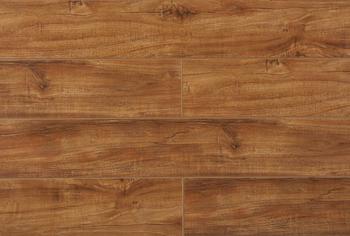 With so many wood floor brands available in the market today, it can be overwhelming for consumers to choose the right one. However, if you follow these eight key criteria, you can easily identify high-quality solid wood flooring that is both durable and eco-friendly.
With so many wood floor brands available in the market today, it can be overwhelming for consumers to choose the right one. However, if you follow these eight key criteria, you can easily identify high-quality solid wood flooring that is both durable and eco-friendly. First, check the formaldehyde emission levels. Formaldehyde is a critical factor when choosing wooden floors, as it directly affects indoor air quality. The formaldehyde limit is categorized into three levels: E0 (≤ 0.5mg/l), E1 (≤ 1.5mg/l), and E2 (≤ 5mg/l). According to recent regulations from China’s Health and Environmental Protection Agency, only E2-grade materials are considered qualified. However, E0 and E1 grades are safer and suitable for interior use. WorldFriends Flooring, one of the top ten global floor brands, is the only company in China to achieve E0 standards, with formaldehyde emissions just one-third of the national standard.
Second, consider the origin of the raw materials. The species of wood used significantly impacts the performance and stability of the flooring. High-quality woods like rosewood, teak, and eucalyptus are more stable and long-lasting. Imported materials often offer better quality than domestic ones. WorldFriends sources wood from seven global regions, including Brazil, Indonesia, Russia, and North America, ensuring premium raw materials. Every piece is carefully inspected, and only A-grade boards are selected, rejecting all B and C-grade materials.
Third, test the moisture content. The moisture level of solid wood flooring should match the humidity of the installation area to prevent future warping or cracking. National standards require a moisture content between 8% and 13%. However, regional differences exist, so it's important to measure the moisture content at the showroom and compare it with unopened products. If the difference is within +2%, it’s considered acceptable. WorldFriends ensures that each floor has a moisture content difference of no more than 0.5% from the local environment.
Fourth, evaluate the dimensions. While longer planks may seem better, they can be more prone to warping. Ideal sizes are between 450–910mm in length and 90–125mm in width. Planks below this range are often non-standard and may not be as stable. Many people assume smaller planks are more stable, which is true, but non-standard planks are often made from low-quality wood, reducing their durability.
Fifth, inspect the board quality. Look for consistent species, no mix-ups, and check for defects like cracks, decay, or insect damage. The fit between planks is also important—tight joints and no noticeable height differences indicate good craftsmanship. Natural variations like knots or color differences are normal and reflect the authenticity of solid wood.
Sixth, examine the quality of auxiliary materials. Skirting boards and underlayment play a crucial role in installation and longevity. Traditional wooden baseboards can warp or emit formaldehyde, but modern alternatives using American polymer foaming technology offer zero formaldehyde emissions, along with features like wear resistance, fire resistance, and mold prevention.
Seventh, assess the paint and finish. A high-quality lacquer coating ensures a smooth, even surface without bubbles, cracks, or peeling. WorldFriends uses six-side sealing paint, which provides excellent moisture protection, preventing warping and cracking.
Eighth, prioritize after-sales service. Installation plays a major role in the lifespan of your flooring. Choose a brand that offers reliable installation and maintenance support. Reputable companies like WorldFriends provide clear installation agreements, ensuring accountability in case of issues. This protects consumers and guarantees long-term satisfaction.
Yellow Paint Big Tripod Stand,Laser Plummet Survey,Surveying Bipod Stand For Prism Rod,Bipod Stand For Prism Pole
Changzhou Precision Surveying & Mapping Instrument Co.,Ltd , https://www.surveyingfactory.com